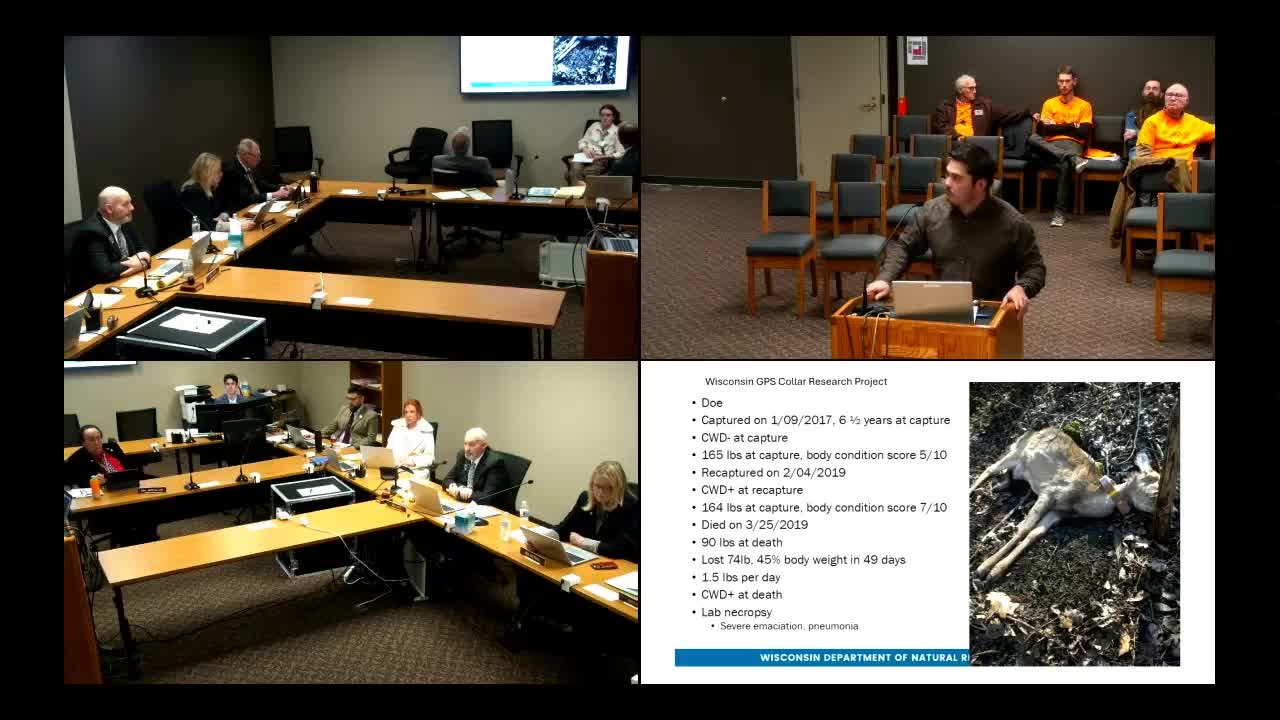Chronic wasting disease devastates deer populations as Wyoming outfitter halts hunting operations
January 17, 2025 | Agriculture and Veterans Affairs, Senate, Legislative, North Dakota
Thanks to Scribe from Workplace AI , all articles about North Dakota are free for you to enjoy throughout 2025!

This article was created by AI using a video recording of the meeting. It summarizes the key points discussed, but for full details and context, please refer to the video of the full meeting. Link to Full Meeting
Over the past two decades, researchers have utilized GPS collars to track thousands of deer, revealing a troubling trend: CWD is significantly affecting deer mortality rates. The disease, which can remain asymptomatic for up to 16 months, ultimately leads to severe weight loss and often pneumonia, as affected animals lose the ability to swallow properly. The stark reality is that once deer contract CWD, their chances of survival plummet dramatically, with studies indicating that after just over a year, only 5% of infected deer are likely to survive.
Dr. Jen Ballard, a veterinarian from Arkansas, shared preliminary data from a recent study indicating that 34% of collared deer that tested positive for CWD died from the disease alone, not from external causes like vehicle collisions or hunting. This statistic underscores the disease's devastating impact on deer populations, which can lead to broader ecological consequences.
The meeting also highlighted personal accounts from those directly affected by CWD. Ken Metzler, a long-time outfitter from Wyoming, expressed his frustration as he can no longer offer deer hunts due to the drastic decline in his herd. He reminisced about the days when he would see hundreds of deer on his property, a stark contrast to the few that remain today. His plea for awareness resonated with attendees, emphasizing the need for proactive measures in managing wildlife health.
As discussions turned to potential solutions, including baiting bans and feeding regulations, the committee recognized the importance of addressing CWD not just as a wildlife issue, but as a significant concern for local economies and ecosystems. The meeting concluded with a call to action, urging stakeholders to collaborate on strategies that could mitigate the spread of this devastating disease and protect North Dakota's deer populations for future generations.
Converted from Senate Agriculture and Veterans Affairs III Jan 17, 2025 meeting on January 17, 2025
Link to Full Meeting
Comments
View full meeting
This article is based on a recent meeting—watch the full video and explore the complete transcript for deeper insights into the discussion.
View full meeting